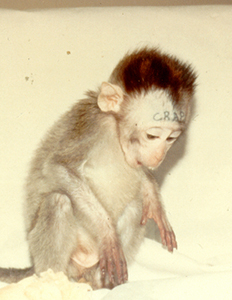File:ALF-Royal College of Surgeons.jpg
ALF-Royal_College_of_Surgeons.jpg (232 × 300 pixels, file size: 64 KB, MIME type: image/jpeg)
Summary[edit]
Licensing[edit]
 | This image is a faithful digitisation of a unique historic image, and the copyright for it is most likely held by the person who created the image or the agency employing the person. It is believed that the use of this image may qualify as non-free use under the Copyright law of the United States. Any other uses of this image, on Wikipedia or elsewhere, may be copyright infringement. See Wikipedia:Non-free content for more information. Please remember that the non-free content criteria require that non-free images on Wikipedia must not "[be] used in a manner that is likely to replace the original market role of the original copyrighted media." Use of historic images from press agencies must only be of a transformative nature, when the image itself is the subject of commentary rather than the event it depicts (which is the original market role, and is not allowed per policy). |
| If this tag does not accurately describe this image, please replace it with an appropriate one. | |
Description: The image comes from a series of slides removed by SEALL/ALF volunteers during a daylight raid in August 1984 on a Royal College of Surgeons (RCS) research facility at Buxton Brown Research Farm, Downe, Bromley, Kent. The sixty activists carried cameras and video recorders, and left with video, photographs, slides, and documents. Some of the slides they obtained showed images taken by researchers of a monkey who had had what appears to be the word 'crap' tattooed on his forehead. The documents contained details of dental and diet experiments being carried out on monkeys and other animals.
The RCS was prosecuted by the British Union for the Abolition of Vivisection for causing unnecessary suffering to a ten-year-old macaque monkey called Mone, and was fined £250, which was overturned on appeal. Activist Mike Huskisson had to admit to having witnessed the documents being removed in order to obtain a prosecution of the RCS. He was sentenced to eighteen months imprisonment.
The RCS reportedly said in its defence that the word tattooed on the monkey's head was not CRAP but CRAPS, and that the camera angle had rendered the S not visible. They said that all their animals are tattooed with a five-letter name that contains the letters RCS, for the Royal College of Surgeons.
See
- Henshaw, David. Animal warfare: The story of the Animal Liberation Front. HarperCollins, 1989, pp. 78-88, cited in Garner, Robert. Animals, Politics and Morality. Manchester University Press, 2004, p. 236.
- Garner, Robert. "Defending Animal Rights," Parliamentary Affairs 1998 51 (3), p. 458.
Source: SEALL/ALF. This version found on the SPEAK website. [1]
Fair use rationale for Animal Liberation Front[edit]
Though this image is subject to copyright, its use is covered by the U.S. fair use laws because:
- It is a historically significant photograph as an example of material found by animal liberation activists in a research facility run by the Royal College of Surgeons in England.
- It is believed to be of a lower resolution than the original.
- The image is being used for informational purposes.
- Because the image depicts a non-reproducible event, there is no free equivalent.
- It has no commercial value.
- It has been reproduced many times in the press in the UK, because it was used in evidence during a widely publicized court case, and it became at one time almost iconic.
- The copyright holder has never objected to its use as far as can be determined.
File history
Click on a date/time to view the file as it appeared at that time.
| Date/Time | Thumbnail | Dimensions | User | Comment | |
|---|---|---|---|---|---|
| current | 04:50, 15 March 2009 |  | 232 × 300 (64 KB) | Fuzzy510 (talk | contribs) |
You cannot overwrite this file.

